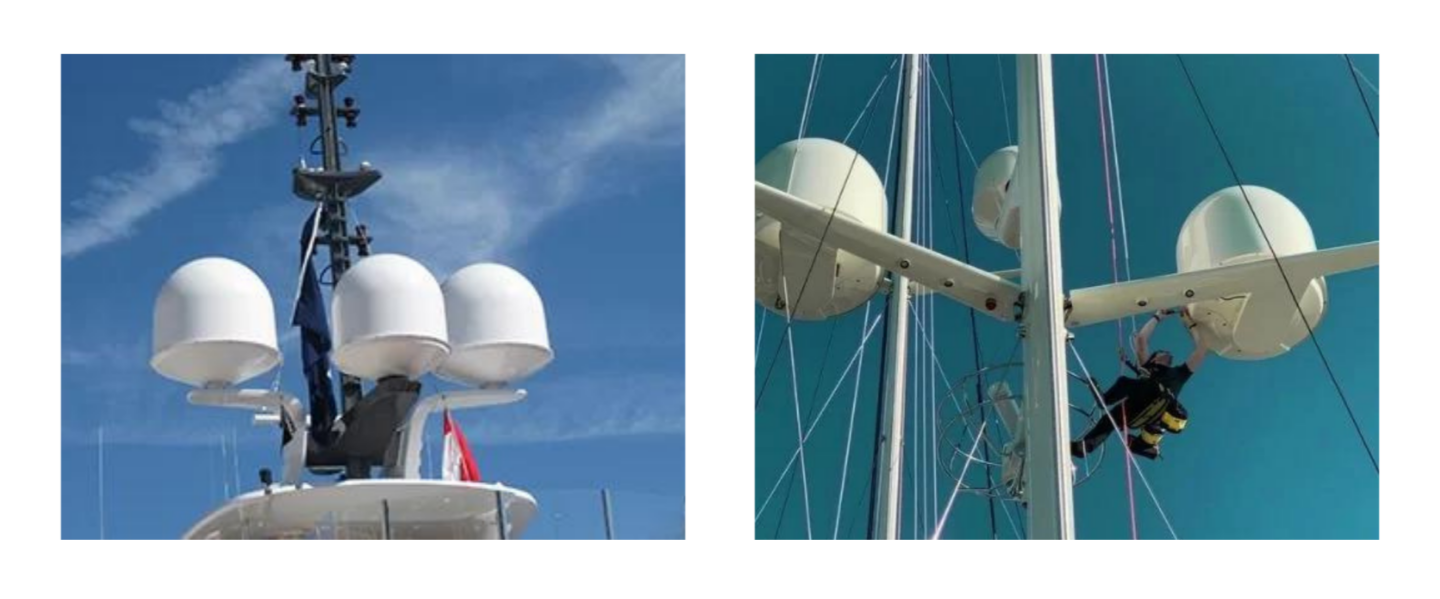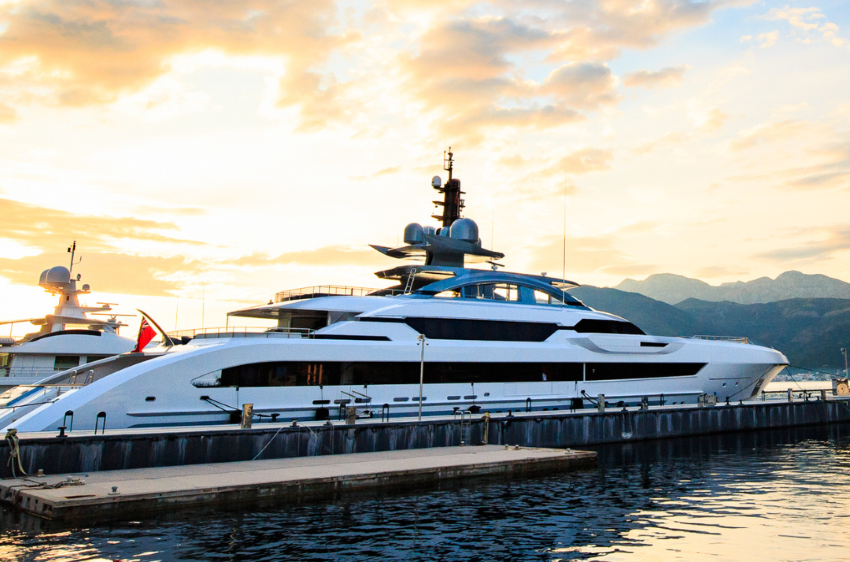The world of satellites can be a confusing one, filled with acronyms and technical jargon. With the number of satellite communication services available to the maritime industry rapidly expanding, we want to provide you with a simplified breakdown of the primary satellite types. Below OceanWeb discusses GEO, LEO and MEO satellites, providing an overview of each orbit, its benefits, limitations, and the leading industry providers.
GEO Satellites and Superyacht Communications
Geostationary satellites sit at around 36,000km above the earth and travel at the same speed as the Earth. This speed contributes to its naming, as the satellites appear ‘stationary’ over a fixed orbit. The high altitude of each satellite enables one singular satellite to cover a large range. It only takes three geo satellites to provide near-global coverage.
Most superyachts in any given marina are fitted with VSATs (Very Small Aperture Terminal). These antennas utilise GEO satellite technology, which the industry has used since the late 80s. It is, therefore, without doubt, a reliable and effective solution, with the adoption of the technology being extremely high. Despite improvements in modems and switches, and experts able to manage the available bandwidth better, there have been very few advancements in VSAT technology.
With the incredible increase in demand for connectivity onboard yachts, VSAT and geo satellites are no longer able to fulfil the demands of the ‘connected yacht’. A typical VSAT plan for a 50m yacht delivers speeds of up to 16 mbps and can set you back >$14,000 a month. This is a high price point for speeds far from the terrestrial connection that guests and crew have come to expect.
Whilst their high altitude has its benefits, it also contributes to one of GEO’s most significant drawbacks. 71,776km is the minimum distance a signal must travel from a GEO satellite to the antenna onboard a yacht, and back. This results in a high latency (the time it takes for data to pass from one point to another) of at least 250 milliseconds each way. The high altitude ultimately results in increased latency, preventing the efficient use of certain applications such as gaming and video conferencing.
When we look at other limitations of geo satellites from a superyacht perspective, they cannot provide vessels with a true global solution. Geo satellites cannot cover the polar regions, so vessels must use an alternative such as Iridium, which runs on L-band.

LEO Satellites – The Future of Superyacht Connectivity?
Whilst having been widely used on vessels for limited data and voice usage since 1989, LEO satellites are now a prominent topic in industry news due to their ability to meet the increased bandwidth demand.
LEO satellites sit at an altitude of less than 1,200km above the earth (around 35 times closer than GEO). This is the orbit used for the International Space Station (ISS). Satellites in this orbit travel around 7.8 km per second, taking each satellite approximately 90 minutes to circle the earth. This means they are constantly moving in and out of range, and as a result, LEO constellations require thousands of satellites to provide uninterrupted coverage. For example, when complete, OneWeb’s low earth orbit solution will be made up of a fleet of 648; Starlink has applied for a licence to fly more than 40,000 satellites. Each constellation must be complete before service begins, and yachts require dual tracking antennas to receive a constant connection.
LEO satellites have created a particular buzz in the industry, as they pose a very real solution to providing superyachts with high-speed connectivity, at a lower price point. The lower orbit means that latency is reduced to around 40 milliseconds, enabling two-way communication applications such as gaming.
In addition to the low latency advantages, LEO offers a truly global solution that can provide coverage to the polar regions. Both OneWeb and Starlink, the world’s largest mega-constellations in LEO, have polar-orbiting satellites in their fleets.
Whilst these satellites are cheaper to produce, they also have a much lower life span than their geo cousins, estimated at around five years. This is due to the harsher environmental conditions, including radiation and atmospheric drag.

MEO Satellites
MEO, or Middle Earth Orbit, hosts one of the most well-known satellite commercial uses: GPS (US Global Positioning System). Sitting at between 5,000 – 20,000 km above the earth, MEO satellites can be considered the middle ground between LEO and GEO, providing a lower latency than GEO, but requiring fewer satellites than LEO.
Depending on their exact altitude, between six and twenty satellites will be required to provide complete coverage of the earth, including the polar regions, helping to close the Arctic connectivity gap.
Global satellite provider SES has entered the MEO market with O3b mPower. This constellation orbits 8,000km above the earth’s surface, delivering users low-latency connectivity within 50 degrees north or south of the equator. In December of 2022, mPower launched two new satellites (of a planned 11), which will deliver high-throughput (massive speeds up to 10 Gbit/s), low-latency, high-speed connectivity services, comparable to fibre-like connectivity to global customers. SES needs six O3b mPower satellites in MEO to cover the globe.
Multi-orbit satellite constellations
Several leading satellite providers are now actively investing in multi-orbit strategies to provide customers with the best possible connectivity solution. GEO satellites have a much higher capacity than LEO/MEO; however, LEO and MEOs’ lower latency supports the global demand for high-speed connectivity. A multi-orbit proposition delivers the best of both worlds, with satellite constellations complementing each other.
Orchestra, promoted by Inmarsat as ‘the communications network of the future’, is designed to meet accelerating bandwidth requirements. The network will combine GEO, LEO and terrestrial 5G. Peter Broadhurst, Senior Vice President of Safety and Regulatory at Inmarsat, spoke of the service,” The principle of the network will be bringing all these networks together to provide a more powerful solution that delivers connectivity most efficiently and cost-effectively.”
This is a complex and evolving landscape, and innovations being discussed today will have a dramatic impact on the availability of connectivity at sea in the future. If you have any questions or require advice on future-proofing your vessel, please get in touch with our team of experts.

